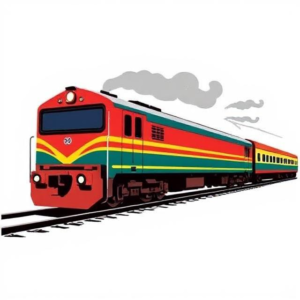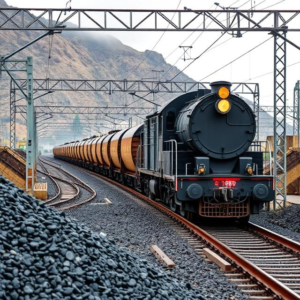The history of Indian Railways is fascinating and stretches back over 170 years. Here’s a simple and easy-to-understand overview:
1. Early Beginnings (Pre-Independence)
- First Train in India (1853): The first passenger train in India ran on April 16, 1853, between Mumbai (then Bombay) and Thane, covering a distance of 34 kilometers. It was a big moment, with around 400 passengers aboard.
- British Influence: India was under British rule at that time, and the British saw railways as a way to transport goods (like cotton, tea, and coal) and to move soldiers across the country. They decided to build the railways to serve their needs.
- Expansion (1850s–1900s): After the first train, railway networks began spreading across India rapidly. By the end of the 19th century, trains were running in many parts of India. The East India Company and private British companies took charge of the railways at first, and eventually, it became a government monopoly.

2. Growth and Development
- Railway Networks: By the early 1900s, railways had expanded to cover large parts of India. In the 1920s, India had an extensive rail network, with lines connecting major cities like Calcutta (Kolkata), Madras (Chennai), and Delhi.
- Railway Divisions: The Indian railway system was divided into regions, and each region managed its own operations. The famous railway companies like Indian Railways, Southern Railway, Eastern Railway, and others were established during this period.
- Introduction of Steam Locomotives: Early trains were powered by steam engines, which were the technology of the time. These steam engines were often very large and needed huge amounts of water and fuel to run.
3. Post-Independence (1947 Onwards)
- Indian Railways Nationalization (1951): After India gained independence in 1947, the government took over all the railway companies. In 1951, the Indian Railways was officially unified under one government entity.
- Expansion and Modernization: After independence, there was a push to expand the railway network further. New trains, stations, and tracks were built to connect even remote parts of the country.
- Electrification: In the 1960s and 1970s, India started to electrify railway lines to replace steam locomotives. This made trains more efficient and faster.
4. Technological Advances (Late 20th Century)
- Shatabdi Express and Rajdhani Express: In the 1980s, Indian Railways introduced faster trains like the Rajdhani Express (which connects Delhi with major cities) and the Shatabdi Express (which operates on major routes with high-speed services).
- Computerization: In the 1990s, ticket booking and scheduling became computerized, making it easier to manage the growing railway network and handle the large number of passengers.
- Introduction of High-Speed Trains (2000s): In the 2000s, Indian Railways started talking about modernizing its trains. The Vande Bharat Express, a semi-high-speed train, was introduced as part of the effort to improve train services.
5. Modern Era (21st Century)
- Dedicated Freight Corridors: Indian Railways has been working on dedicated freight corridors to improve the transportation of goods, separating passenger trains from freight trains to reduce congestion and improve efficiency.
- Smart Stations and Luxury Trains: Today, Indian Railways is modernizing its stations to offer better facilities. Luxury trains like the Maharajas’ Express offer a royal travel experience. High-speed train projects, like the Mumbai-Ahmedabad Bullet Train, are being planned and developed.
- Technology & Safety: Today, technology is playing a significant role, with safety systems, advanced ticketing systems, and trains like Tejas Express, which are faster and more comfortable.
Important Facts about Indian Railways:
- Largest Employer: Indian Railways is the world’s largest employer, with over 1.3 million employees.
- Vast Network: It operates over 67,000 kilometers of track and serves over 8,000 stations.
- Huge Passenger Traffic: It is one of the busiest rail networks in the world, carrying millions of passengers daily.
- Freight Operations: It also carries a massive amount of goods, such as coal, steel, cement, and agricultural products.
Conclusion:
Indian Railways has played a major role in shaping the country’s economy, culture, and development. It started as a colonial project and has since transformed into one of the most important and vast railway networks in the world, serving both passengers and freight while constantly evolving with new technologies and initiatives.
Keywords: Indian Railways, Railway










